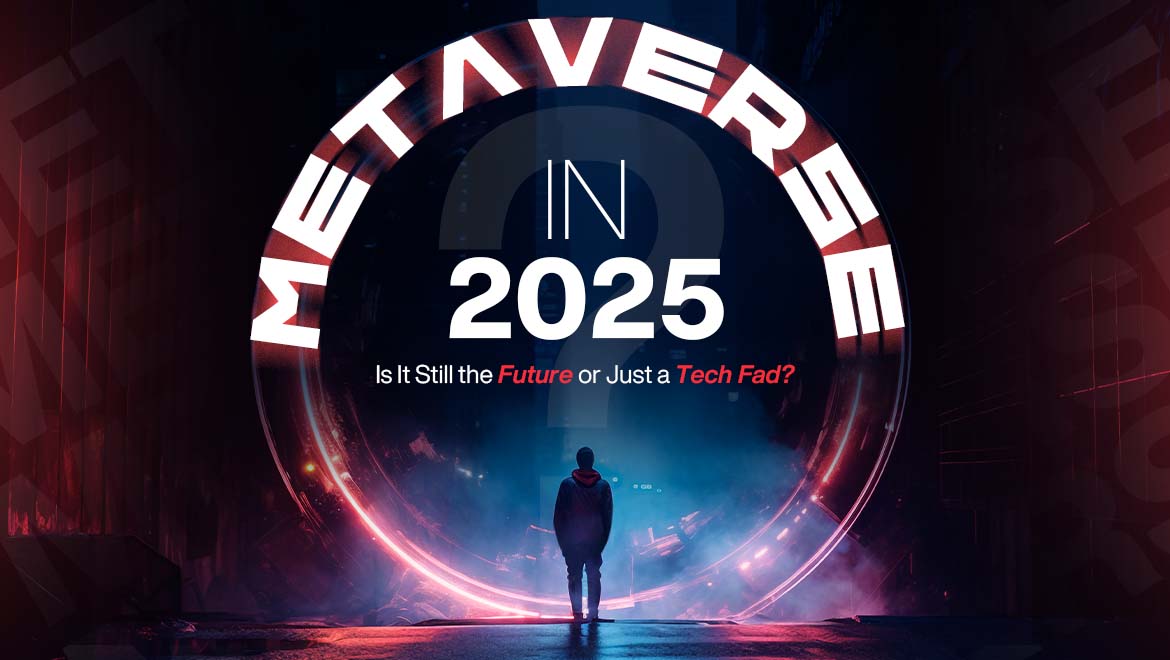- 27th Feb 2025
- 2 min read
Metaverse in 2025: Is It Still the Future or Just a Tech Fad?
The metaverse was once heralded as the next big revolution in digital interaction, promising immersive experiences, decentralized economies, and seamless integration of virtual and physical realities. However, as we move into 2025, questions linger: Is the metaverse still the future, or has it become just another tech fad?
The Promise of the Metaverse
The metaverse, often described as a persistent, shared, virtual world, is built upon technologies like virtual reality (VR), augmented reality (AR), artificial intelligence (AI), and blockchain. It promises to revolutionize various industries, including:
- Social Interaction: Virtual meetings, events, and communities that transcend physical limitations.
- Commerce & Economy: Digital assets, NFTs, and blockchain-based economies enabling virtual property ownership.
- Gaming & Entertainment: Expansive digital universes where players can explore, interact, and create.
- Education & Training: Virtual classrooms and realistic simulations enhancing learning experiences.
The Reality Check: Where Are We in 2025?
Despite its initial hype, the metaverse has faced several challenges on its path to mainstream adoption. Let’s analyze the current state:
1. The Rise and Fall of Big Tech Investments
Tech giants like Meta (formerly Facebook), Microsoft, and Google poured billions into metaverse development. However, progress has been slower than expected due to:
- Lack of widespread adoption: Many users still prefer traditional digital platforms over immersive VR.
- Technological limitations: High costs, bulky VR headsets, and limited AR advancements hinder accessibility.
- Economic downturns: Companies like Meta have shifted focus towards AI, reducing their metaverse spending.
2. The Gaming Industry’s Role
Gaming remains one of the strongest drivers of metaverse adoption, with platforms like Roblox, Fortnite, and Decentraland offering metaverse-like experiences. However, while these platforms have large user bases, they operate as closed ecosystems, limiting true metaverse interoperability.
3. The Evolution of Virtual Workspaces
Remote work accelerated the demand for digital collaboration tools. Companies have experimented with VR meetings and virtual offices, but mainstream adoption remains limited. Microsoft’s Mesh for Teams and Meta’s Horizon Workrooms have seen mixed success, as users still prefer traditional video conferencing.
4. Blockchain & Web3 Integration
The metaverse was expected to be powered by Web3 and blockchain technologies, yet:
- NFT markets have cooled down after their peak in 2021-2022.
- Decentralized metaverse platforms struggle with engagement due to complex user experiences and speculative economies.
- Regulatory challenges have slowed Web3 adoption in some regions.
Challenges Hindering Metaverse Growth
1. Hardware Limitations & Accessibility
- High-quality VR headsets remain expensive and not widely adopted.
- AR glasses are still in early development, limiting mainstream use cases.
2. Monetization & Business Models
- Many metaverse projects rely on speculative digital assets rather than sustainable revenue streams.
- Uncertainty around user willingness to pay for virtual goods and services.
3. Regulatory and Ethical Concerns
- Privacy risks associated with tracking user behavior in virtual environments.
- Government regulations affecting blockchain and digital asset ownership.
The Future of the Metaverse: Where Do We Go from Here?
While the metaverse has faced setbacks, it is far from dead. The industry is shifting focus towards practical applications, including:
- Hybrid digital experiences: Integrating AR overlays in real-world environments rather than full VR immersion.
- Enterprise & training applications: Virtual simulations for medical, military, and industrial training.
- AI-enhanced virtual interactions: Smarter avatars and assistants improving engagement.
